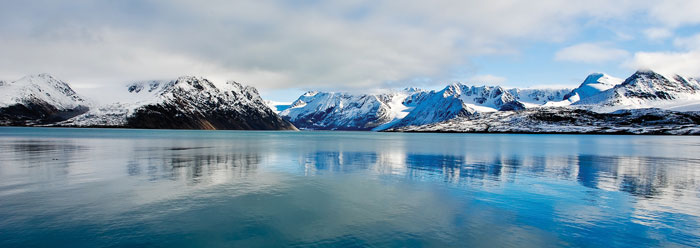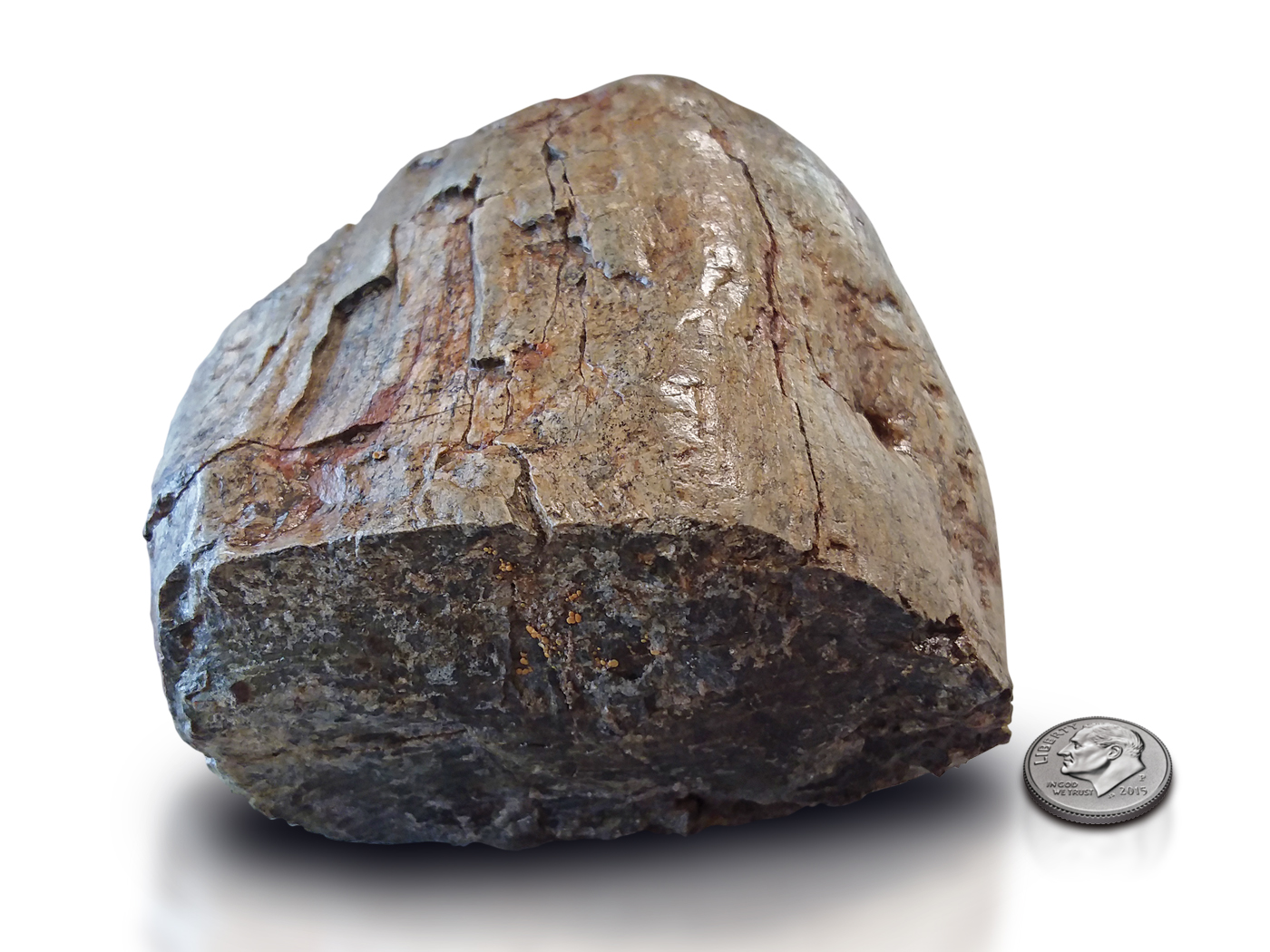by Frank Sherwin, M.A., & Brian Thomas, M.S. *
Scientific observations made in the seminal book The Genesis Flood are even more scientifically valid today than when they were first written. Although subsequent research has shown a few to be inaccurate, most of the perspectives that were laid out by John Whitcomb and Henry Morris in their 1961 publication have been verified beyond reasonable doubt by ongoing observations.
This is amazing, considering how geologic interpretation has changed since the 1950s. For example, plate tectonics has become a core model and catastrophic floods are now invoked to explain most sedimentary rock. Below are some Genesis Flood insights that science has clearly validated.
Catastrophic Sedimentary Deposits
Drs. Whitcomb and Morris noted agreement between some basic implications of a world-destroying Flood and large-scale observations from the earth’s surface. For example, since "almost all of the sedimentary rocks of the earth…have been laid down by moving waters," it is legitimate to consider flooding as the primary cause.1
The bulk of mountains and continents are comprised of sedimentary mudstones of some type. When The Genesis Flood was written, mainstream geologists believed that certain mudstones could only form by slow accumulation of sediments in the bottom of calm, shallow water bodies. But in 1980, layered mudstones resulted from the Mount St. Helens volcanic eruption. Then in 2009, a paper in Science caught up with Whitcomb and Morris, saying, "Mudstones can be deposited under more energetic conditions than widely assumed, requiring a reappraisal of many geologic records."2
Rapid Mountain Uplift
The Genesis Flood also surmised that "great tectonic movements and isostatic adjustments would have to take place, forming the deep ocean basins and troughs and elevating the continents."3 This reference to "great tectonic movements" connects well with what has been discovered about mountains and sea floors.
Secular geologists, who choose to ignore the implications of a Genesis Flood, say that slow continental plate movements lifted the mountains to such great heights. However, this reliance on slow speed causes big problems.
For example, erosion through observed processes of wind, water, and gravity slumping happens much faster today than any slow pace of mountain build-up, so how could mountains ever have reached their current dizzying heights? Instead, it appears that tremendous "great tectonic movements" rapidly pushed up land that was catastrophically carved into today’s steep-sided mountains, perhaps by continental water runoff and heavy post-Flood rains. If mountain uplift was as slow as is often claimed, then "mountains" would be eroded humps, if they existed at all.
Recent Mountain Uplift
Additional study has added stunning verification to the idea that "great tectonic movements" recently shaped the earth’s surface. Applying conventional thinking reveals a narrow two to five-million-year time span for all the world’s mountains to rise, but shouldn’t there be mountains from many different "ages" of evolutionary earth history?4
Though the "millions of years" age assignments applied to the rock record have been disproved by the ICR RATE initiative and other research, the raw isotope data often used in such dating correspond to the relative positions of rock layers. This means that rocks or minerals "dated" at 250 million years in a lower layer are likely older than rocks "dated" at 5 million years in an upper layer.5 In reality, however, the former may represent an igneous rock formed during the Flood, and the latter might be typical of a rock formed soon after the Flood.
Isotope data has confirmed Morris and Whitcomb’s observation "that most of the present mountain ranges of the world are believed to have been uplifted (on the basis of fossil evidence) during the Pleistocene or late Pliocene," which corresponds to the post-Flood Ice Age.6
Even granite has been found to form quickly from magma. A 2000 study in the journal Nature said, "Provided flow is continuous, mechanical considerations suggest that…far from being geologically sluggish…granite magmatism is a rapid, dynamic process operating at timescales of ≤100,000 years, irrespective of tectonic setting."7
Sea Floor Formation
Similarly, sea floor studies from the last few decades "show that today’s igneous ocean floor…all of it…has formed via seafloor spreading since roughly mid-way through the Flood."8 And as Whitcomb and Morris suggested, "ocean basins were deepened after the Flood."9 But what colossal energetic process could have done this?
It looks like the sea floors were made recently and rapidly. Experiments have demonstrated that silicate-rich sea floor "material can weaken dramatically, by factors of a billion or more, at mantle temperatures."10 This means that once the earth’s crust was broken at the start of the Flood, hot mantle material, forming new lower ocean basins, propelled continent-size tectonic plates horizontally on the order of one meter per second. This catastrophic breakup and heating was implied in Genesis 7:11, which references the "fountains of the great deep" bursting forth. Again, Morris and Whitcomb were ahead of their time.
Living Fossils
The Genesis Flood provided the best explanation for earth’s major surface features. Drs. Morris and Whitcomb also pointed to "living fossils" as evidence that refutes evolution’s long ages. Since then, many more of these have been found.
Living fossils are "supposedly ancient and long extinct creatures which have suddenly and unexpectedly turned up in the modern world."11 They openly challenge the vast ages posited by evolutionary theory by showing none of evolution’s expected changes in body plans over supposedly vast time spans.
For example, evolutionists were confident that grasses evolved millions of years after the dinosaurs…until dinosaur coprolites (fossilized excrement) were discovered containing several species of grass.12 In August 1994, a "dinosaur-age" tree called the Wollemi pine was discovered alive and well in Australia. It was declared the "botanical find of the century."13
A grand host of "living fossils" in the animal world stubbornly remain virtually the same as their ancient predecessors after the unimaginable millions of years demanded by evolution. Evolutionists such as the late Stephen Gould refer to this lack of change as stasis. One recent study found bacteria named Mariprofundus that left "distinctive traces in the fossil record." The study’s authors wrote:
Petrographic images of Mariprofundus-like stalks from a 350-million-year-old rock associated with an ancient hydrothermal vent site are indistinguishable from modern-day organisms.14
Fossilized grasshoppers and seastars found entombed in the same layer as Archaeopteryx (an extinct bird) are virtually identical to modern varieties. From "Jurassic" shrimp to the shovelnose ray, animals and plants…some supposedly long extinct…are discovered alive today looking virtually identical to their fossilized counterparts. Evolution means "change," but these living fossils are a testimony to stasis…no change!15
In 1961, The Genesis Flood discussed living fossils, rapid alteration of the sea floor, rapid and recent uplift of all the world’s mountains, and catastrophic deposition of sedimentary rocks. Since then, science has strongly confirmed each of these.
References
- Morris, H. M. and J. C. Whitcomb. 1961. The Genesis Flood: The Biblical Record and Its Scientific Implications. Phillipsburg, NJ: Presbyterian and Reformed Publishing Company, 124.
- Macquaker, J. H. S. and K. M. Bohacs. 2007. On the Accumulation of Mud. Science. 318 (5857): 1734-1735.
- Morris and Whitcomb, 121-122.
- Morris, J. 2005. When Did the Mountains Rise? Acts & Facts. 34 (3).
- "The overall systematic trend of radioisotope ’ages’ in the rock units according to their relative positions in the geologic record confirms that accelerated radioisotope decay was the dominant factor operating through earth history." Snelling, A. A. 2005. Isochron Discordances and the Role of Inheritance and Mixing of Radioisotopes in the Mantle and Crust. In Radioisotopes and the Age of the Earth: Results of a Young-Earth Creationist Research Initiative, Vol. 2. Vardiman, L., A. A. Snelling and E. F Chaffin, eds. El Cajon, CA: Institute for Creation Research and Chino Valley, AZ: Creation Research Society, 394.
- Morris and Whitcomb, 127-128.
- Petford, N. et al. 2000. Granite magma formation, transport and emplacement in the Earth’s crust. Nature. 408 (6813): 669-673.
- Baumgardner, J. 2005. Recent Rapid Uplift of Today’s Mountains. Acts & Facts. 34 (3); Morris and Whitcomb, 128.
- Morris and Whitcomb, 77.
- Baumgardner, J. 2003. Catastrophic Plate Tectonics: The Physics Behind the Genesis Flood. In Proceedings of the Fifth International Conference on Creationism. Ivey, R. L., Jr., ed. Pittsburgh, PA: Creation Science Fellowship, 113-126.
- Morris and Whitcomb, 176.
- Sherwin, F. Dinosaurs, Grasses, and Darwinism. ICR News. Posted on icr.org November 29, 2005.
- Snelling, A. 2006. Wollemia nobilis: A Living Fossil and Evolutionary Enigma. Acts & Facts. 35 (4).
- Emerson, D., E. J. Fleming and J. M. McBeth. 2010. Iron-Oxidizing Bacteria: An Environmental and Genomic Perspective. Annual Review of Microbiology. 64 :561-83.
- Two recent books that document many dozens of living fossil examples are Evolution: The Grand Experiment by Dr. Carl Werner, and The Fossil Record: Unearthing Nature’s History of Life by Dr. John Morris and Frank Sherwin.
* Mr. Sherwin is Senior Science Lecturer and Mr. Thomas is Science Writer at the Institute for Creation Research.
Cite this article: Sherwin, F. and B. Thomas. 2011. Genesis Flood Insights More Relevant Today than Ever. Acts & Facts. 40 (2): 15-16.




















